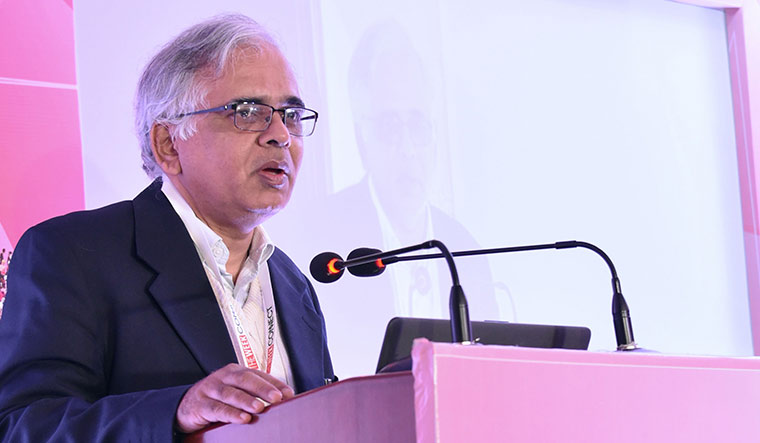The pandemic year was a time when Indian institutions and laboratories came to the fore, coming up with indigenous solutions, whether it was for developing testing kits or personal protective equipment, understanding the novel virus or creating surveillance mechanisms. The Centre for Scientific and Industrial Research is the country's research and development knowledge base and the umbrella body for 38 national laboratories. Its director general, Shekhar Mande, tells us how India's scientists helped manage the pandemic. Excerpts:
Q/ India's scientific community seemed well-prepared to tackle the pandemic.
A/ Yes, our strategy was ready in February, when we held a national meeting in Goa, anticipating that the situation was turning grim. We knew our weak areas, where we were poorly equipped. We formulated our strategy for the pandemic on five pillars—surveillance, diagnostics, new interventions (drugs and vaccines), equipment for hospitals and supply chains. We were clear on two aspects—that any new technology will require industrial support and that raw materials should be available in India. In fact, one of the first things we developed was Arogyapath, a supplier-buyer interface.
Q: You also built hospitals?
A: Yes, the Roorkee-based Central Building Research Institute designed rapidly deployable hospitals which can be set up within five days. We set up one in Ghaziabad and six in Himachal Pradesh.
Q/ Could you elaborate on surveillance?
A/ So far, our labs have sequenced 5,000 virus genomes, which have helped our understanding, and also contributed to a global understanding. We did regular serosurveys, and in this 10,500 of our staffers contributed their blood samples, too. We conducted sewage samplings in 10 cities, and air samplings, too. This surveillance helped us understand how the virus is transmitted and we were able to map its spread. The serosurvey of August-September showed high prevalence in big cities, a few months later, we noticed higher numbers in smaller cities. The serosurvey also gave us the good news that many patients in India were asymptomatic. Genomic studies showed us how the UK mutant strain had travelled to Telangana. Interventions are possible only when we first generate data.
Q/ What new interventions did CSIR labs offer?
A/ The Institute of Genomics and Integrative Biology and Tata CRISPR jointly developed the low-cost diagnostic kit, Feluda. Indian Institute of Chemical Technology, Hyderabad, developed a low-cost process for manufacturing the antiviral Favipiravir, approved for emergency use for Covid-19, which we are marketing through Cipla. We developed Sepsivac along with Cadila Pharmaceuticals for treatment; it is in Phase-3 trials. National Aerospace Laboratories developed the non-invasive ventilator, SwasthVayu; we recently provided the Delhi government with 1,200 such machines.
Also read
- India restarts random Covid tests for international passengers as 4 cases of Omicron BF.7 variant detected
- Tamil Nadu CM Stalin shifted to hospital for Covid-related symptoms
- Army surgeon on the frontline of Covid-19 battle dies
- Age of Heroes
- We should not speculate on herd immunity, focus on prevention: ICMR chief
- Tested to the limit
Q/ Why, in your opinion, did India not suffer as badly during the pandemic as the western nations? Our per capita cases and death rate are comparably low
A/ There were many reasons, from our preparedness to our innate immunity. The first case of Covid-19 was reported in India on January 30 and the country went into preparation mode immediately. The lockdown weeks gave us time to ramp up arrangements and get a better understanding of the disease. So, when cases began rising, we were ready with diagnostic kits, hospitals and medication. The mask discipline and other protocols have been well followed by Indians, that has also helped. India is a young country demographically and this is an infection where the older generation is more vulnerable. Also, since Indians have been exposed to a host of infections, our immune systems are perhaps better than those of the more developed nations.
Q/ What are your learnings from the pandemic?
A/ Although it caused much distress, the pandemic has also been a time of opportunity, especially for the scientific community. During extraordinary circumstances, the real human grit and potential comes to the fore. For us Indians, we have realised our capabilities. In the history of India, this time will also be remembered as a coming together of potential and capability, and realising we can be atmanirbhar.


